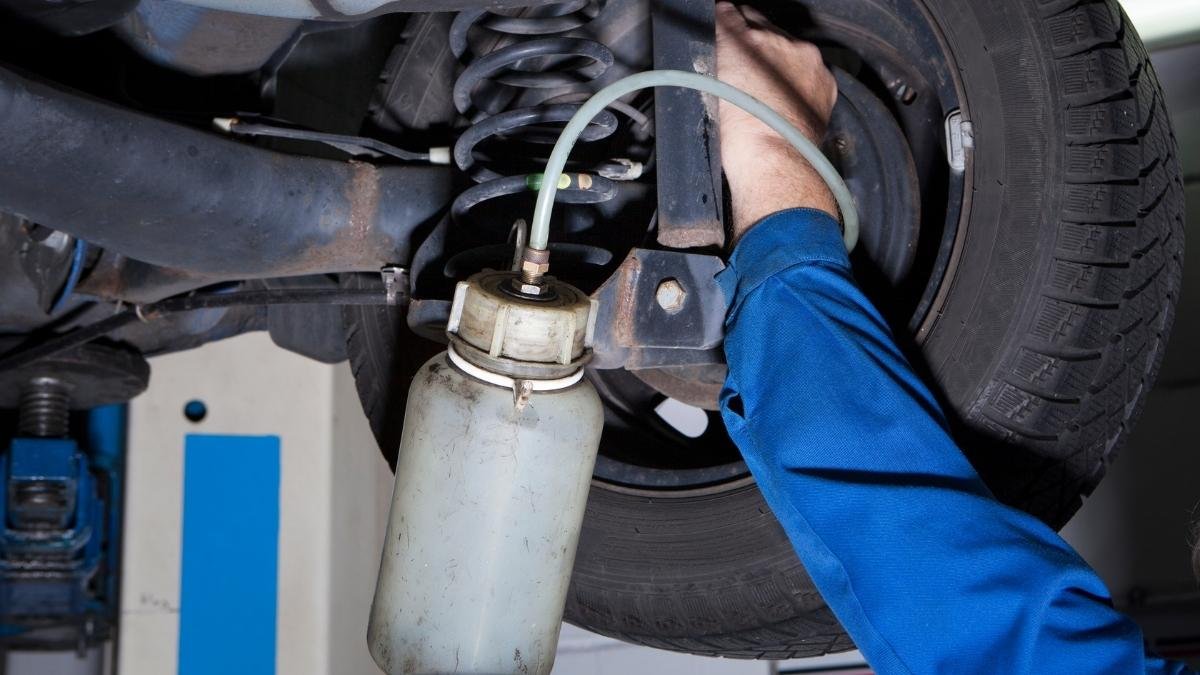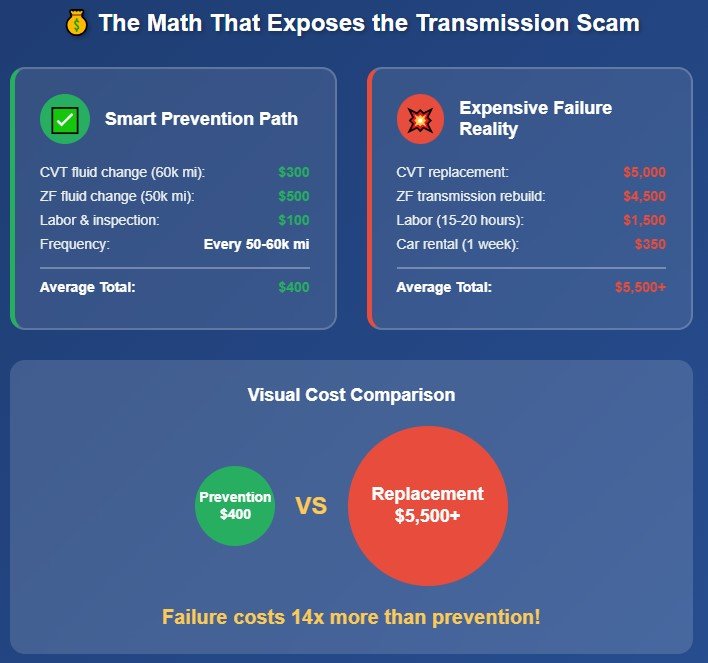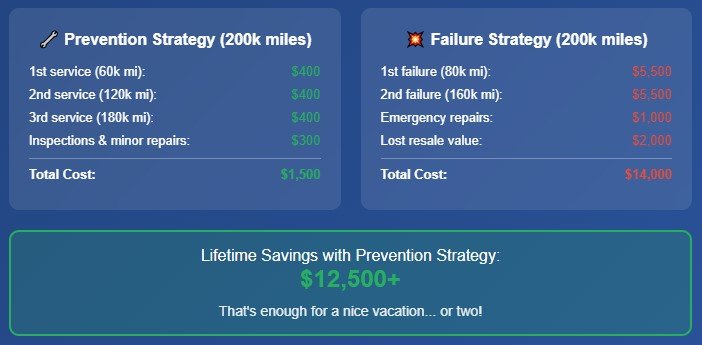
You’re cruising along, feeling pretty good about your “smart” car purchase. The salesperson bragged about your transmission being “sealed for life” – no maintenance needed, ever.
Then one Tuesday morning, your car starts making weird noises. By Thursday, you’re staring at a repair estimate that makes your mortgage payment look reasonable.
Welcome to the $5,000+ surprise that mechanics see every single day.
Here’s what nobody told you when you bought that car: “Sealed for life” is automotive marketing speak for “expensive surprise waiting to happen.” And the clock is already ticking.
The Lie That’s Costing Car Owners Thousands
• Zero maintenance required
• Lower total ownership costs
• Advanced engineering solution
• Lifetime warranty coverage
• Engineered to fail post-warranty
• Hidden costs shifted to owners
• 6% failure rate during warranty
• No coverage after expiration
Let me be blunt – the “maintenance-free” transmission is one of the biggest scams in the car industry today.
Auto expert John Cadogan doesn’t mince words: “I’m essentially calling bullshit on all ‘sealed for life’ transmissions. At best they are a self-fulfilling prophecy, and at worst an extremely cynical way for a carmaker to engineer-in some epic, deal-breaking major failures.”
Think about it. When has anything complex ever lasted “for life” without maintenance? Your phone needs updates. Your house needs repairs. Even your body needs check-ups.
But somehow, your car’s transmission – one of its most complex parts – needs nothing?
What “Lifetime” Really Means (Spoiler Alert: It’s Not What You Think)

Here’s the dirty secret: When manufacturers say “lifetime,” they don’t mean your car’s lifetime.
They mean the warranty period. Usually 5-8 years or 100,000 miles.
After that? Good luck, and here’s your bill.
It’s like a financial time bomb with a very predictable timer.
The math is brutal. Manufacturers engineer these transmissions to survive just long enough to avoid warranty claims. Once you’re out of warranty, every failure becomes your expensive problem.
The Two Transmission Types Destroying Bank Accounts Right Now

Nissan’s CVT Nightmare: When “Smooth” Becomes Expensive
If you drive a Nissan, pay attention. Their Continuously Variable Transmissions (CVTs) have become legendary – and not in a good way.
The failure rate during warranty periods hit nearly 6%. That’s almost 1 in every 20 Nissans needing a new transmission while still “under warranty.”
Which models? Pretty much all of them:
- 2014-2018 Rogue
- 2015-2018 Pathfinder
- 2019-2024 Altima
- 2017-2029 Maxima
When these fail, you’re looking at $3,500 to $8,000 for replacement. Some luxury owners have paid over $10,000.
Here’s why CVTs are particularly nasty: The fluid inside has to handle intense pressure between belts and pulleys. When it breaks down, the whole system usually needs replacing – not just repair.
The European “Luxury” Problem: ZF 8-Speed Deception

This one’s sneaky because it affects so many “premium” brands:
- BMW
- Audi
- Mercedes
- RAM trucks
- Chrysler
- Dodge
- Jeep
- Land Rover
- Jaguar
All these brands use the same ZF 8-speed transmission. All claim it’s “sealed for life.”
Here’s the kicker: ZF themselves recommend fluid changes every 50,000 miles.

The company that makes the transmission says to change the fluid. The car companies that buy it from them say Don’t bother.
Who do you think is right?
When these fail, you’re facing $3,000-$6,000+ in repairs.
How to Spot a Dying “Lifetime” Transmission
- Shuddering during acceleration HIGH
- Delayed engagement (2+ seconds) HIGH
- Car enters “limp mode” HIGH
- Whining or grinding noises MED
- Burnt fluid smell MED
- Harsh shifting when cold HIGH
- Transmission warning lights HIGH
- Red fluid leaks underneath HIGH
- Delayed gear changes MED
- Slipping into neutral HIGH
Your transmission will warn you before it dies. The trick is knowing what to look for.
CVT Warning Signs:
- Shuddering during acceleration (feels like driving over rumble strips)
- Delays when shifting to drive (transmission thinking too long)
- Car goes into “limp mode” (dashboard lights, reduced power)
- Whining or grinding noises (metal saying goodbye to metal)
- Burnt smell (if you can check the fluid)
ZF 8-Speed Red Flags:
- Harsh shifting when cold (transmission fluid getting thick)
- Random warning lights (computer getting confused)
- Red puddles under your car (transmission fluid leaking)
- Delayed or rough gear changes (gears not meshing properly)
- The car suddenly slips into neutral (total system failure beginning)
Spotted any of these? Don’t wait. Every day you delay could turn a $400 maintenance into a $5,000+ replacement.
The Real-World Math That’ll Make You Angry

Let’s talk numbers, because this is where it gets frustrating.
CVT preventive maintenance:
- Fluid change every 30,000-60,000 miles
- Cost: $200-$400 each time
CVT replacement when it fails:
- Cost: $5,000+
- That’s 12-25x more expensive than maintenance
ZF 8-speed preventive maintenance:

- Fluid change every 50,000 miles
- Cost: $300-$700 each time
ZF replacement when it fails:
- Cost: $3,000-$6,000+
- That’s 10x more expensive than maintenance
Put another way: You could do preventive maintenance for 20+ years for less than the cost of one failure.
Stories From the Repair Shop Floor

These aren’t theoretical problems. Real people are getting hit with these bills every day.
Sarah from Denver: Her Subaru XV needed a $7,500 CVT replacement at 85,000 miles. The dealer’s response? “That’s normal wear and tear.”
Mike from Atlanta: His Nissan Murano died at 78,000 miles. $5,000 repair bill. The kicker? He’d asked about transmission maintenance a year earlier and was told it wasn’t needed.
Jennifer from Phoenix: Her BMW X3 started shifting roughly at 90,000 miles. The dealer wanted $4,200 for a new ZF transmission. When she asked why it failed, they shrugged: “Sometimes they just go.”
The pattern is always the same: failure right after warranty, massive repair bills, and dealers acting like it’s normal.
Why Companies Keep Pushing This Lie

The business model is pretty clever (if you’re the manufacturer).
Market your cars as having lower maintenance costs. Win more sales. Engineer the transmission to last just through warranty. When it fails, it’s the customer’s problem.
It’s a hidden tax on car ownership, paid years after purchase.

Transmission specialist at Blauparts puts it perfectly: “From our 30 years of automotive experience, there is no such thing as truly ‘sealed for life’ transmission fluid. All transmission fluids eventually deteriorate, break down, and become contaminated.”
But admitting that would hurt sales, so the marketing department wins.
What Your Insurance Won’t Tell You
- Collision damage to transmission
- Theft of entire vehicle
- Fire damage to transmission
- Flood damage (comprehensive)
- Vandalism to transmission
- Mechanical breakdown from wear
- CVT failure from old fluid
- ZF transmission deterioration
- Lack of maintenance issues
- Age-related component failure
• “Failure due to lack of preventive maintenance”
• “Outside normal maintenance schedule”
• “Customer neglect caused the failure”
Think your insurance will save you? Think again.
Standard auto insurance doesn’t cover transmission failures from wear and tear. That’s considered maintenance, not an accident.
Extended warranties? They often void coverage if you don’t follow “recommended maintenance schedules” – even for supposedly maintenance-free parts.
You’re financially on your own when this happens.
Taking Back Control: What You Can Do Right Now
Forget what the marketing brochure says. Here’s what transmission experts recommend:
For CVT Owners:
- Change fluid every 30,000-60,000 miles (regardless of manufacturer claims)
- Monitor for warning signs weekly during your commute
- Check for recalls – many CVTs have extended warranty programs after lawsuits
For ZF 8-Speed Owners:
- Follow ZF’s actual recommendation: fluid change every 50,000 miles
- Don’t wait for symptoms – by then damage may be done
- Find a transmission specialist who knows these systems
For Everyone:
- Start a maintenance fund – even $50/month builds quickly
- Document everything – keep receipts for any transmission work
- Ask direct questions at service time: “How’s my transmission fluid look?”
The Bottom Line: Don’t Be the Next Victim
Here’s what nobody wants to admit: “Maintenance-free” is marketing code for “expensive failure scheduled for later.”
Every day you drive with old, degraded transmission fluid, you’re playing automotive Russian roulette with a loaded chamber.
The choice is yours: spend a few hundred on maintenance now, or several thousand on replacement later.
Your mechanic already knows which choice most people will make – and they’re ordering more transmissions accordingly.
Your Next Move
Don’t wait for symptoms. Don’t trust the marketing. Don’t assume your car is different.
Call your trusted mechanic tomorrow and ask one simple question: “When should I change my transmission fluid?”
If they say “never,” find a different mechanic.
Your bank account will thank you later.
Have you been hit with a surprise transmission bill? Share your story in the comments – others need to know what they’re facing.





